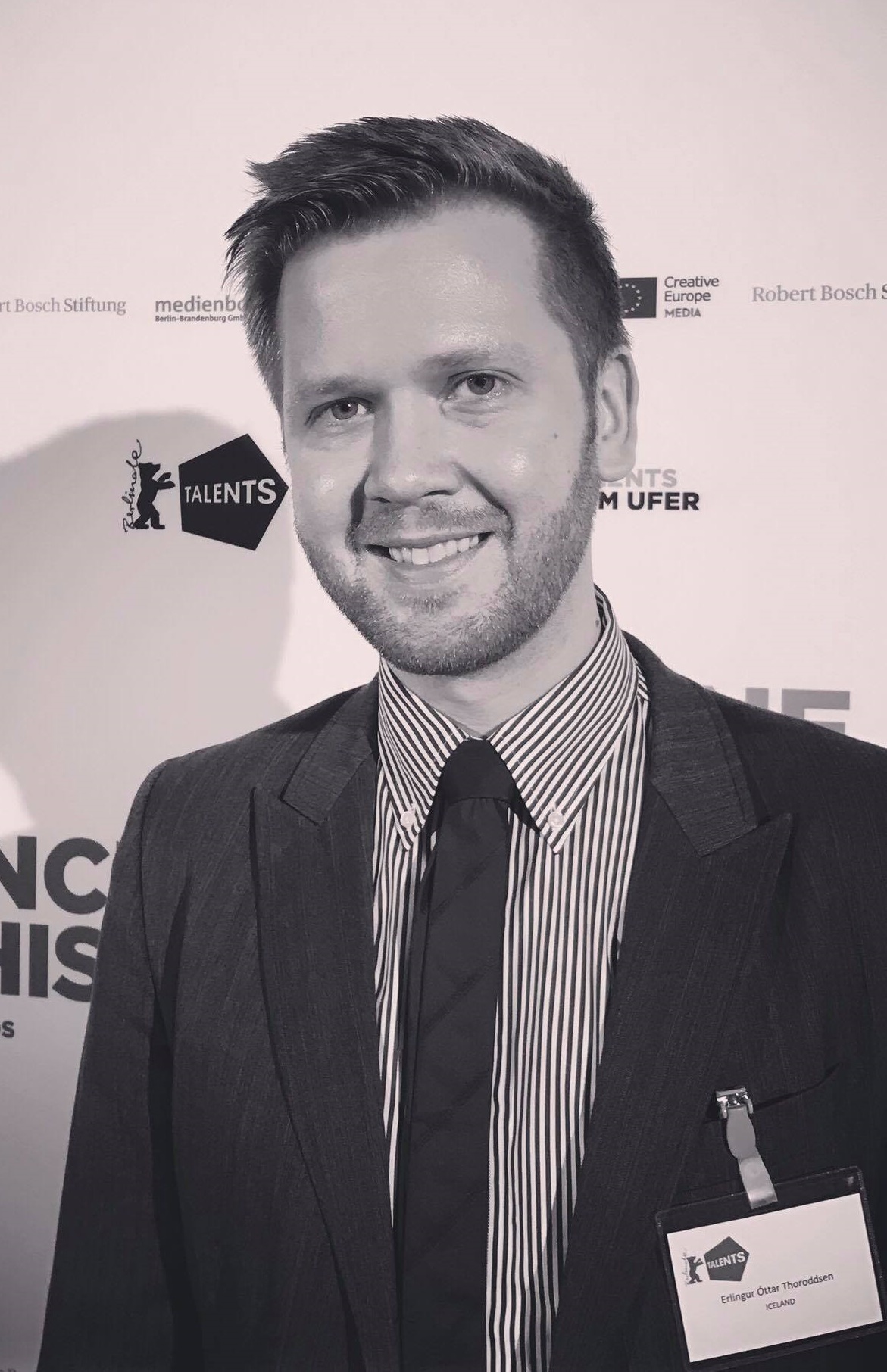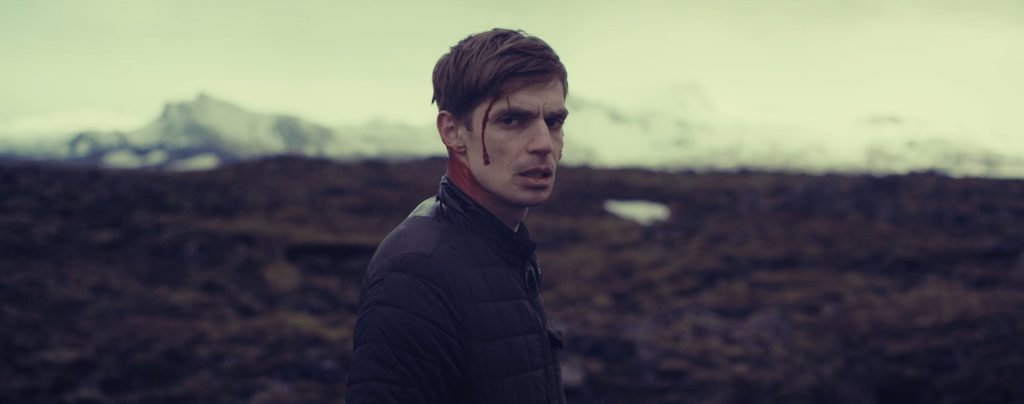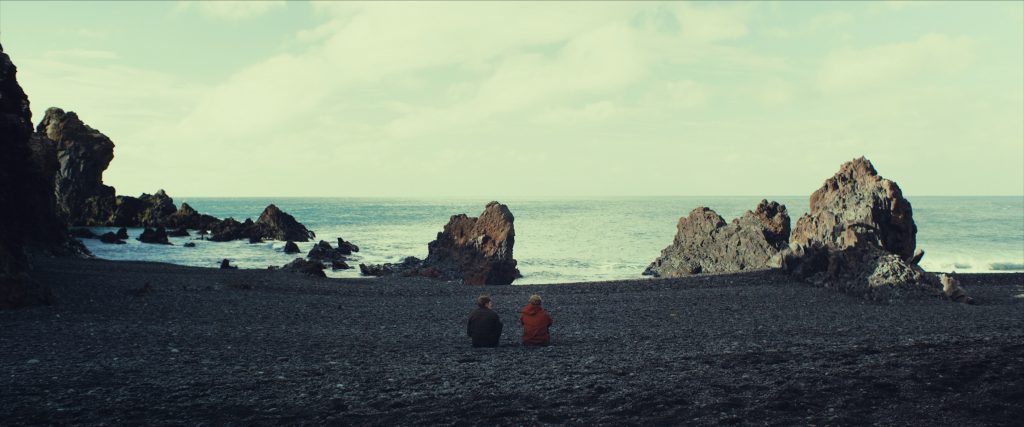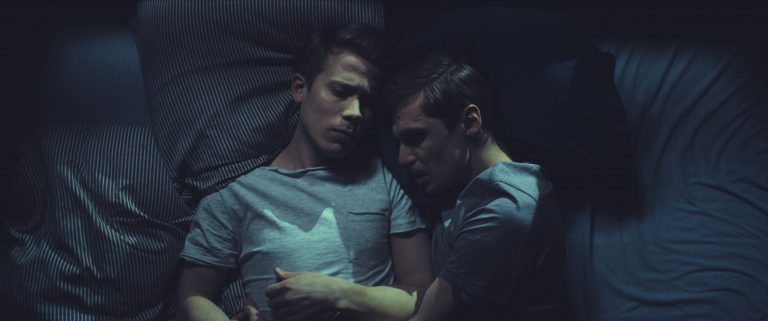Rift, the second feature film of Icelandic director Erlingur Óttar Thoroddsen, recently premiered at the Göteborg Film Festival and is on it’s way to make the festival rounds. It is a story of two guys who have recently broken up, a psychological thriller with horror elements. Filmed on location in a remote spot in Iceland. What gave Erlingur that idea and why did he choose a gay relationship as his subject?

“There were two factors that more or less made the film happen the way it did. The first one was that I really wanted to make a film that was logistically simple and inexpensive. Something with two main actors in one location, that could be filmed in a short amount of time and with a small crew.
I had recently finished my first feature film, Child Eater, which was a much larger production, and while I was waiting for that to be released, I wanted to do another film – something completely different. So I was mulling around ideas of stories that could fit that model, looking at films like Ingmar Bergman’s Persona and Andrew Haigh’s Weekend, trying to come up with something in that vein that I could do in Iceland.
At the same time, for more personal reasons, I was really interested in exploring the contradictory feelings that come up when a relationship falls apart. When you love someone even though you know you shouldn’t be with them, and when you leave someone just based on gut feelings and no real logic. I feel like there’s a lot of bittersweet and weird emotions that come up when a breakup happens, and I really wanted to take a look at that.
Then I realized that those two things actually fit together perfectly. So the story became a story about a couple going through their recent breakup while stuck in a cabin in the middle of nowhere.”
Films about gay relationships are not common in Iceland. Was that a factor in your decision to make a film about this subject?
“Yes, I was absolutely aware of the fact that there is a great shortage of Icelandic films that deal with LGBT issues in a serious way, and especially in an adult way. I don’t remember ever seeing an Icelandic film where a gay relationship between two adult men is a central, integral part of the film, as well as portrayed in an honest way.
“The reaction was amazing … It was great sitting in the audience and hearing the audience go “ooh” and “ahh” and even scream a couple of times!”
And I find that very interesting, because Iceland has been at the forefront of the LGBT rights movement for decades now, and yet our depiction of LGBT characters in TV and cinema feels years behind compared to the rest of the world, or even compared to our neighbor countries.
I think the biggest reason for that is obviously the fact that most working filmmakers in Iceland are straight men, and subsequently the stories they tell are colored by that.
So it was definitely a conscious decision to deal with a LGBT subject for my first feature in Iceland, through my own lens and in my own way.”

Do you consider yourself primarily a gay filmmaker, or is that of no consequence?
“Well, I think that question begs a counter-question: What does it mean to be a gay filmmaker? I am certainly a filmmaker who is gay and very comfortable with being out, and I am also very interested in both creating and consuming queer types of work.
I do think queer representation and general diversity is very important when it comes to art and culture, and I applaud and admire artists who are loud and visible in those regards.
That being said, I don’t necessarily think about labels very much when I think about myself. I guess I don’t define myself in any specific way. My interests tend to veer towards fantastic genre elements — like horror, thriller and sci-fi — as well as queer elements, and I think my work so far reflects that.
So I guess the answer is, on the one hand I’m comfortable with being called a “gay filmmaker”, because it’s totally true. And on the other hand, I’m not really sure what that label necessarily means or what expectations arise from it.”

Asked if he thinks that the audiences in Iceland will perceive Rift differently from other audiences because the topic is so unusual for an Icelandic film, Erlingur shakes his head.
“Perhaps, and perhaps not. I do hope that the film will appeal to Icelandic audiences, and that they will recognize the fact that this type of story hasn’t really been done before in Iceland. At the core of the film there’s a very universal story that everyone should be able to relate to in their own way. But it is always difficult to predict how people will respond and what they will take away from the experience. If the film provokes a conversation, then that will be a great start.”
By definition Rift is a psychological thriller with horror elements. What does that mean exactly?
“Hopefully it means that it will creep you out! We worked very hard on creating an unnerving, almost nightmarish atmosphere for the movie, and there are definitely sequences that play into horror conventions.
But the emotional core of the movie is the relationship between the two main characters, and the film is always grounded by the performances of the two leads – Björn Stefánsson and Sigurður Þór Óskarsson. I think the greatest luck I had in the whole process was finding those two amazing actors and convincing them to do the film, because they really did a spectacular job.
“I don’t remember ever seeing an Icelandic film where a gay relationship between two adult men is a central, integral part of the film, as well as portrayed in an honest way.”
Relationships can be weird and messy and conjure feelings that are often conflicting and not logical at all. So the tone of the film really takes its cue from that — I was trying to follow an emotional truth rather than necessarily a logical one, which is why the performances are so important to the end result.
It’s definitely a film that doesn‘t fit comfortably into any single genre!”
Rift premiered at the Göteborg Film Festival recently. How was it received?
“The reaction was amazing. We were the closing film of the festival and had two screenings at the largest theater in Göteborg, both of which were sold out. It was a bit surreal, because before the premiere maybe 15 people had seen the film, and afterwards something like 1500 had seen it. It was great sitting in the audience and hearing the audience go “ooh” and “ahh” and even scream a couple of times!”

What’s next for the film and when will it premiere in Iceland?
“Right now we are looking forward to the next set of festivals to screen at. It’s too early for me to reveal anything specific, but we have some exciting things coming up. We are also working on setting a premiere date for Iceland. We don’t have the exact date yet, but I would say that the fall sounds quite likely at the moment.”


